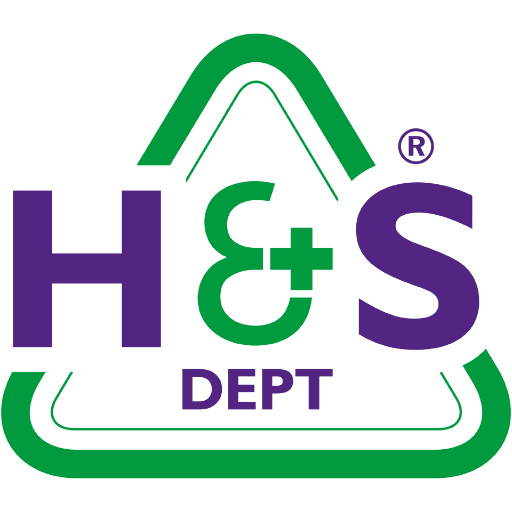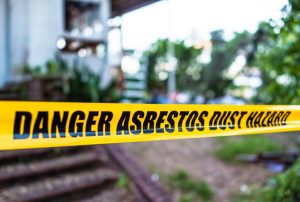Asbestos safety is still as important as ever
Although it has been illegal to install since 1999, there are still an estimated six million tonnes of asbestos in UK buildings. Over 5,000 workers died from asbestos exposure in 2019, making it the biggest cause of occupational death in the country.
Because the risks are so great, the rules around asbestos removal are extremely strict. The HSE will not hesitate to prosecute those who fail to comply, as a recent case demonstrated.
A school and a maintenance contractor in County Durham were fined a total of £5,000 for exposing several people to asbestos fibres. Asbestos in the school’s ceiling was disturbed while workers were installing a new heating system.
The HSE investigation found that both parties were culpable for failing to refer to the existing asbestos register or the building’s management plans. Doing so would have alerted them to the asbestos, allowing them to take the necessary precautions. It is estimated that 80% of schools contain asbestos.
If you are the duty holder for a non-residential building (although including shared areas within multi-occupancy buildings like purpose built flats), it is your duty to identify if asbestos is present; record any presence, its condition and type; assess risk of exposure; prepare and implement a plan to manage the risk; and inform contractors of the presence of asbestos before work begins.
Contractors must then ensure that nobody is exposed while the job is underway. Contractors must also provide employees with adequate training in asbestos safety.
Asbestos regulations are too important to get wrong. If you’re unsure, don’t hesitate to get in touch.
What does Plan B mean for offices?
With the arrival of the Omicron variant of COVID-19, the government has announced the implementation of Plan B measures. Facemasks are now compulsory in most public spaces, and vaccine passports are required for entry into some large events. There is some variation in devolved nations, but everywhere is tightening up.
The government has also reintroduced the work from home directive. Any office workers who can work remotely should do so. Hopefully this will be less of a shock to your employees than it was the first time.
However, you should still take steps to ensure that remote workers’ health and safety is supported. Regular check-ins are important for your employees’ mental health, especially over the Christmas period. Ensure that their workstations comply with display screen equipment rules, that they can sit with a good posture and there are no other hazards.
If you still have workers in the office, you should also update your risk assessment, to reference the new variant, current control measures, testing and isolation requirements. Make sure that cleaning measures are still in place, that ventilation is adequate and all opportunities for social distancing are explored. If you need help, feel free to ask.
What does the law say about pest control?
A pest infestation is a major health and safety issue, birds, insects and especially rodents can spread viruses and bacteria, leading to serious illness. For this reason, pest control is a legal obligation for employers. This is covered by several pieces of legislation:
- The Health and Safety at Work Act 1974 makes it the duty of employers to remove health hazards from the workplace wherever possible.
- The Prevention of Damage by Pests Act 1949 gives local authorities the power to compel land owners and occupiers to remove rats and mice.
- The Food Safety Act 1990 makes it the duty of any business that handles food to prevent contamination by pests.
The law may compel you to deal with pests, but it can also limit your options for doing so. This was recently demonstrated in Bath, where the council is struggling to solve the city’s sea gull problem. A new system has made it impossible to remove nests without applying for permission from Natural England. With fewer nests removed, gull numbers have soared.
The problems in Bath stem from the fact that herring gulls are an endangered species. This is unlikely to be an issue when dealing with rodents or insects, but there are still some relevant laws to consider:
- Pesticides and insecticides are covered by COSHH. Pesticides are also explicitly covered by the Control of Pesticides Regulations 1986. These substances must be used sparingly and only in a way that doesn’t endanger humans or non-target species.
- Before Brexit, biocides (products designed to kill or deter living things) were regulated by the EU Biocidal Products Regulation (EU BPR). On 31st December 2020, this was replaced by the GB Biocidal Products Regulation (GB BPR). Most aspects of the old law have been copied across to the new legislation, but there are a few key differences. These will probably only affect companies who sell or import biocides, but it’s worth checking that the products you are using are still legal.
As with most health and safety issues, prevention is better than cure. Taking steps to avoid a pest infestation will save you a lot of trouble in the long run. You should clean eating areas regularly and make sure that no food is left out overnight. Waste bins should be emptied every day and rubbish should be stored in closed containers. You should also inspect the building regularly for gaps and holes that could allow small animals to enter.
Addressing back to work anxiety

Even if some of these fears are unfounded, rising stress levels are a health risk in themselves. Widespread anxiety in your workforce could damage productivity and make it harder to retain employees. In extreme cases, it could even lead to workers being put on long-term sickness leave.
Worryingly, it seems that much of this anxiety is caused by a lack of trust between staff and employers. 72% of workers said that they were not confident in their employer’s ability to keep them safe.
The best way to counter this is to involve your staff in the health and safety process. Asking for their input when creating your risk assessment will ensure that their concerns are taken into account. You should also consult them on any new safety measures to make sure that they work in practice as well as in theory.
Once new rules have been agreed, provide the necessary resources to help colleagues follow them. This could be a formal training session, or just some posters and flyers to serve as reminders. It is also important to lead by example. Be sure to follow health and safety guidelines yourself and enforce new rules consistently. This will show staff that you take their safety seriously.
Myth busters: January sales edition
The January sales are fast approaching and many stores are hoping for a busy start to 2022. As the nation’s bargain hunters get ready for action, we thought we’d take a look at some retail-related health and safety myths.
Something smells fishy
A store stopped giving out empty “tester” perfume bottles, much to the disappointment of a customer. When a complaint was raised, the store blamed “health and safety” for the decision.
This is false. There is no health and safety law prohibiting the distribution of empty perfume bottles. Instead, the decision was probably related to the store’s waste and recycling policy. Explaining this to customers would’ve been more constructive than scapegoating health and safety legislation.
Water terrible decision
In a bizarre case, a lady who had fainted in a shop was told by staff that she couldn’t have a glass of water “for health and safety reasons”. This is, of course, ridiculous. There is no law against bringing a customer a glass of water, and it is certainly not a health and safety issue. In fact, given that the customer had fainted, refusing her water was a far more dangerous choice.





